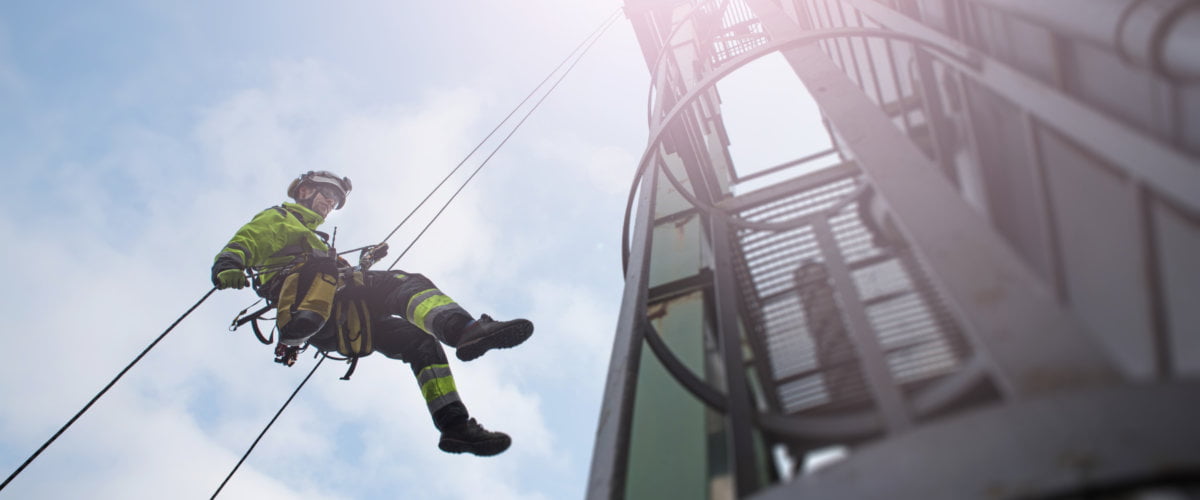Understanding risks for lone workers
To establish if you need a lone worker monitoring solution you must understand the risks facing your outdoor lone workers whilst they are working. We have identified 3 key points for you to consider and mitigate against to keep your lone workers safe.

3 considerations to understand lone worker risks:
1. There are greater risks when working alone
Regardless of the industry in which they work, a lone worker is exposed to significant risk simply because they work alone. This is because lone workers behave differently compared to those working in teams, working unsupervised and without colleagues they inherently take more risks. If a lone worker does have an accident, this potentially could be compounded as they are alone without help at hand. Lone worker risk assessments, safety policies and control measures should be more rigorous than those for other workers to take account of these facts.
Many organisations now have more lone workers than ever before. With this in mind, it is important to review and update your health & safety policies to protect your new lone workers.
READ: HSE’s publication Protecting lone workers.
Here’s a link to further information on protecting those who work alone.
Lone workers are exposed to significant risk and need to be treated differently.
2. Establish the types of risk
There are three types of risk that lone workers can be exposed to:
- Environmental based risks such slips, trips and falls whilst working in hazardous or remote locations or
- High risk tasks or
- People-based risks such as aggression from members of the public.
You need to establish which risk types your lone workers are predominantly exposed to and what the most suitable emergency response would be in a crisis. Where your lone workers work and their individual roles are contributing factors to understand this.
Environmental risks and High risk tasks
Working outside in rugged, demanding sites means the job intrinsically carries higher risks due to the very nature of the work and the location. The location itself could be hazardous with inhospitable terrain; these environmental risks combined with adverse weather conditions increase the chances of slips, trips and falls for instance. In addition, the lone worker’s specific activities could be high risk including operating heavy machinery, working at height or inspecting/maintaining difficult to reach assets.
Read the latest HSE statistics for Work-related fatal injuries in Great Britain.
3. Lack of support and communications
An obvious consequence of working in faraway sites is if there is an incident which causes harm, the lack of support and access to help may increase the impact of the incident. An injury that could be dealt with easily and quickly in a populated, urban environment suddenly becomes serious and potentially life threatening in an isolated place. This means the ability to communicate with someone should an incident occur is essential.
Working in a remote location more than likely means your lone workers will have limited or non-existent mobile phone reception. You need to consider how they will communicate with you and raise the alarm in an emergency.
Isolated locations and lack of mobile phone signal are risks to be considered.
The emergency response
The ability to respond swiftly and appropriately to incidents is a major consideration:
-
Which emergency service?
Depending on where your lone workers work and the types of risks they are exposed to, the nature of the emergency response could be very different, for example from Mountain Rescue, the Fire service to Coastguard.
-
Unable to summon help?
Not all lone workers will be able to communicate with you if they need emergency help. If a lone worker is incapacitated or unconscious this could lead to a life-threatening situation. It is important to consider what would happen in this scenario.
-
Escalation procedures?
Develop robust procedures so you can act quickly in a crisis to support the emergency services.
How Trackplot can help
Our purpose at Trackplot is to help lone workers operating in distant and tough environments to keep safe. We have designed our solution specifically for outdoor lone workers anticipating the risks identified above:
- Environmental Mapping Service to highlight environmental hazards and adverse weather conditions.
- Met Office Weather Warning Service to warn of potential problems up to 7 days ahead.
- Notifications to alert if a lone worker becomes Overdue because they are incapacitated or unconscious.
- Personal Severe Weather Notifications
- Trackplot World uses satellite networks enabling lone workers to keep in touch wherever they are.
- Guidance to develop pragmatic Lone Working Policy and Procedures.
